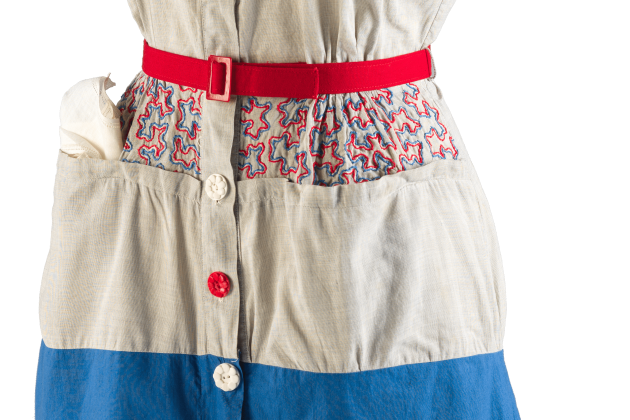Why New-York Historical Society Is Planning Fall Show That Will Be All About the Ordinary

Regular schmegular clothing isn’t typically the impetus for museum exhibitions, but the New-York Historical Society will be embracing the ordinary with its fall show.
As the exhibition’s name makes clear, “Real Clothes, Real Lives: 200 Years of What Women Wore, the Smith College Historic Clothing Collection” will highlight the everyday clothing of American women. Bowing Sept. 27 and running through June 22, the show explores more than fashion. History, economics and the back stories about the clothing will be some of the subjects that will be addressed. Covering more than 200 years, the exhibition will also feature objects and images from the New-York Historical Society.
More from WWD
EXCLUSIVE: Toronto's Hottest Social Wellness Spot Is Opening in New York
Cad & The Dandy to Bring Savile Row Style to 57th Street Storefront
New York One Step Closer to Passing Fashion Workers Act, Which Aims to Protect Models and Others
Visitors to its Joyce B. Cowin Gallery of Women’ History on Manhattan’s Upper West Side will find a Depression-era house dress, a psychedelic house dress and an Abercrombie & Fitch wool suit circa 1917. That last keepsake, a gray-green jacket and skirt, was worn by someone who joined a group of Smith College alumni in northern France helping with relief efforts, including driving and repairing the group’s van that was also used to transport food, first aid items, equipment and supplies — often behind enemy lines, according to a NYHS spokesperson.
With more than 4,000 donated items from the 1800s to the present, the Smith College Clothing Collection is an archive that is known for its range of day-in, day-out attire. It was founded in 1979 by a then-Smith senior Beth Pfaltz Welsh and the school’s students have worked as interns ever since on the Northampton, Mass., campus.
The liberal arts school counts Julia Child, Gloria Steinem and Sylvia Plath among its notable alumnae. Created to advance the understanding of women of all classes through the study of their dress, the school’s clothing collection fosters interdisciplinary research, inquiry and connections through the clothing. The collection is a resource for students and scholars of costume design, the history of dress and material culture, art, curatorial practice and history.
Real Clothes will touch upon how women’s apparel choices, purchases and alterations have impacted and defied societal expectations. Divided into five sections, the exhibition begins with “Home: All Work, No Pay,” where some well-worn garments will be among those featured as signs of daily household tasks such as a black-and-white cotton work dress (circa 1865-70).
Another area, “Service: Capable and Accomplished,” will spotlight uniforms, including a housemaid’s battered boots (circa 1920), a 1955 bubblegum pink waitress’ uniform, and a 1976 maternity uniform worn by a McDonald’s staffer.
The “Public Dress: In Good Taste” section will underscore how women of all classes in the 19th and 20th centuries tried to adhere to the codes for public dressing that were specific to their class, age, race, religion and locality. In addition, “Rites of Passage: What She Wore” will play up clothing and accessories tied to major life events like 19th-century mourning earrings. How social conventions and gendered traditions have changed will also be examined in that area. The show’s final section will be “Pushing the Boundaries: Rebel Wear,” which will feature such pieces as a traditional men’s gray suit (1920-28) that was custom-made for an individual assigned female at birth.
Best of WWD

